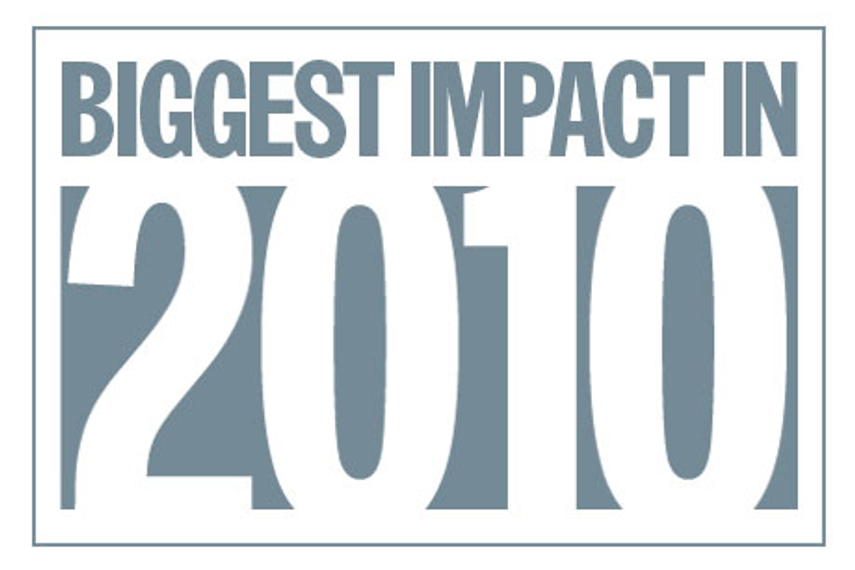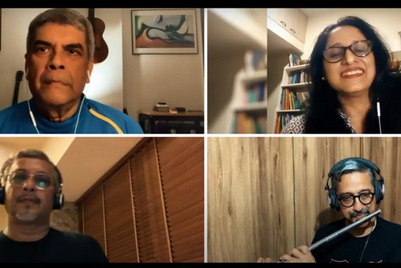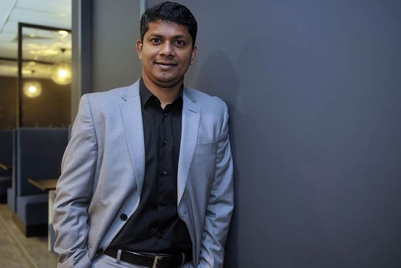
Jasmin Sohrabji
managing director, OMD
2010: the attitudinal sync tipping point?
Each year mediums and vehicles see ups and downs, some weaken others gain momentum. But if I was asked to sum up 2010, it would have to be a comment about attitude and not mediums. We entered the year from different perspectives...some on a gentle road to recovery, others moving faster away from any economic slowdown and still others smiling and thanking their sustained growth. From diverse travels of 2009, we converged on a single path of synchronised attitudes in 2010. It did not matter if your 2009 was good, bad or ugly – 2010 will be a year of much promise and an attitudinal sync towards risk, experimentation and forward looking. We no longer want to rely on the crushes of safe numbers, or the time-tested! But most importantly the ‘we’ was in sync...all key and accountable stakeholders. And while we may like to believe that the economics of 2009 had a role to play, I think there is another interesting trend that is driving an attitude change in all of us. It’s not only the opportunity of newer mediums and technology that drives this change; I think we have now seriously broken the umbilical cord with fmcg thinking! Newer, and somewhat tech-skewed sectors have finally balanced our thinking and we no longer are a mixed bag of old and new age marketers...we are all new age thinkers taking a mixed bag of old and new age sectors into the new year and new decade.
Prabhakar Mundkur
CEO, PerceptH
‘2010 has sealed and formalised the fact that it is the media agency that really has the 360 degree offering and not the creative agency. So what might have seemed like a flash in the pan a couple of years ago is now very definite and concrete. The media agency has besides media planning and buying, expertise in sports management, tv production, entertainment, branded content, digital media and now even strategic brand planning, initially the stronghold and prerogative of the creative agency. Unlike their creative counterparts who are unable to make any investments into the business, the media agency is investing in research. proprietary tools, evaluation of 360 communication, and a host of other research and development activities.
With the depth and breadth of the offering from media agencies now all it has to add is probably the creative department to creative the new full service agency of the future’
Subhash Kamath
managing partner, BBH India
"The only really important development that has impacted us in 2010 has actually been to do with the government’s initiatives, and not the ad industry’s. Thanks to the government’s ‘stimulus’ packages introduced in early 2009 (following the global meltdown) it resulted in higher consumer spends, especially in categories like consumer durables, automotive and telecom. These have really boomed in the last year and consequently, overall ad spends grew >25%. Agencies have grown well on the back of this. But sadly, there’s been no corresponding breakthrough in creativity or thought leadership. At least, not at a level that would put Indian advertising on the global stage. I’m hopeful that we’ll see some path-breaking stuff in 2011."
Shekar Swamy
group CEO, RK Swamy BBDO
There are developments that take place whose impact can be felt immediately (like an earthquake). And then there are developments that take place whose impact can only be seen after a lapse of time, and usually after it is too late. In this brief note, I would like to reflect on the latter type.
Indian TV audiences have been bombarded with reality shows in 2010. What caught my attention was that these shows are mostly "imports" i.e. they are overseas ‘creations’, fully formatted and, I am told, even being executed by production houses with international parentage. This made me look up the share of the television audience of foreign-owned channels ruling over the Indian broadcast space.
Our Media team confirmed to me what I was already aware of – that foreign-controlled TV channels control over a 65% share of the Indian television audience in the general entertainment genre (and I am leaving out the specialist channels that cater to Kids, Travel and others). The extraordinary thing is that even in the USA, which shouts from the mountain tops about free trade, such foreign control over their broadcast space is not permitted. Rupert Murdoch had to become a US citizen in order for News Corp to penetrate the media market in that country.
So what does this mean for the Indian market and audience? In the short run, perhaps not much will be visible. In the long term, we could see more and more of our audiences getting more and more attuned to subtle and not-so-subtle messaging and influences from elsewhere. Control of the airwaves is like a drop of ink in a clear glass of water. The permanent change in colour will be visible, but slowly.
Is this paranoia? I don’t know. But who is bothered with long term implications. After all, there are millions viewing the reality shows on television now, and the ratings are good, right?
Ajit Varghese
MD, Maxus India
To me the single most important development of 2010 that impacted the industry is actually "seesaw" demand fluctuation. After a slow 2009, most of the industry did not know what to expect from 2010 and probably gained very much because of that by having cautious cost approach and windfall topline growth. Since most of the growth in recession and post-recession was due to FMCG’s, investments got skewed toward TV (led by GEC’s and Sports). Digital continued to grow at 30% plus which was not unexpected considering the media consumption changes. Social media gained momentum as companies getting more and more interested in what is being spoken about them. Other media are all in line with normal Adex growth typical of post slowdown.
But with this "not so expected" growth came few noticeable changes:
- Focus on Product – whether its advertisers, media houses and agencies, serious time seems to spend on getting product right and willingness to spend time and effort behind backing it
- Fight for market share – fight in the market place becomes more competitive as companies started looking externally (read consumer - Star plus success of reading the consumer and what needs to change) and extremely competitive where nobody could see eye-to-eye making it all "here and now".
- ROI conversations moving beyond rate led efficiencies
- Content is king gets more and more reinforced across all media platforms – success of IPL cricket on Youtube, integration of brands in popular reality shows, more and more AFPs getting slotted, rising of brand associations with existing properties/ event.
- Challenge for "ideas" to differentiate: Seemed lacking of new or break through stuff in 2010, but the ball seems to be set rolling for 2011.
Looking forward for a great 2011, where "power of idea" and collaboration of media platforms for business solutions can be taken forward aggressively.
Gowthaman Ragothaman
leader, South Asia, Mindshare
Multiple Stakeholders
2010 saw the multiplicity of players that are staking their claim to play some role or the other in the Marketing Communications Value Chain. Across Creative, Media, Search, Social, Experiential, DM, Research, Analytics, Content, Mobile, Events, Activation, Rural and many more such specialisms, multitude of players are emerging right now to appease the client with claims and counter claims. I believe the overall Marketing Communications market is just getting over crowded (much like our telecom sector!). At one end, while so many choices are actually "good news" for the Client, it also poses a very strange challenge for them to dedicate time and resource to stitch all these services into a wholesome marketing program for their brands. I believe this has got huge implications for our industry, which from simple Advertising has now metamorphosed into a 30 sector behemoth in no time. The industry is getting over-crowded and that is the most significant development in 2010 - which is leading towards over commoditization of all these services, lack of scrutiny of deliveries and creating fair-weather friends for short-term tactical gains. This I believe, is the root cause for so many pitches that has happened in the media industry in 2010, not to ignore or forget the fact that Clients now do have a separate creative agency for specific campaigns, choose a digital agency for one of their activities, hiring a analytics company for checking the ROI or for that matter bringing in some of these services in-house to build their own expertise. All in all, this trend is likely to stay through 2011 and beyond and one hopes that this is just a fad before pragmatism, trust and the spirit of partnership/collaboration settles in.
Umesh Shrikhande
CEO, Contract Advertising
Against the backdrop of a sluggish 2009, what unfolded in 2010 is both instructive and positive. I am referring to a measured yet definite return of the ‘Age of Purposefulness’. Back to first principles, value extraction, accent on measurability and worrying about the fundamentals of a brand were some of the broad manifestations. Let me hold a mirror to a few salient trends and developments.
- India along with few developing countries got recognized for being a hotbed of business innovation. The theme got tweaked from ‘Value for Money’ to ‘Value for Many’. Indian companies on the back of ambition and fear, reinvented business models with new products and services like $3,000 cars, $300 computers and $30 mobile phones. With 21,500 multinationals based in the emerging world - the best of these, viz. India’s Bharat Forge in forging, China’s BYD in batteries and Brazil’s Embraer in jet aircraft, got acknowledged to be as good as anybody in the world.
- Even upscale and westernized brands like Tommy Hilfiger, Levi’s, Domino’s and Shoppers’ Stop developed a serious focus on Tier 2 and 3 towns. Creating new challenges of conversing with a non-metro consumer. Language advertising, functional use of digital media and a re-engineered customer experience.
- Centrality of the brand, what it stands for and the customer experience that it creates became big points. Many brands across categories - from PSUs to telecom to FMCGs - revisited their visual identities. Experiential marketing captured the imagination of many. Event companies came into their own delivering scaled up experiences with ease.
- Social media marketing ‘came, saw and conquered!’ FB reached 23 million users in 2010, with 60% of them outside metros. Marketing, online reputation management and lead generation being the top 3 reasons for using social media. Mobile marketing acquired omnipresence.
M.G.Parameswaran
executive director and CEO, Draftfcb+Ulka
The India story got a new meaning in 2010 with the continuation of big ticket acquisitions of Indian companies and brands: Piramal Pharma by Abbott and then just a few weeks ago, Paras Brands by Reckitt Benkiser. Both these in a span of about 6 months spell a new trend in the way global corporations are seeing India growth story and Indian brands. While many may not agree with the valuation formula, one thing is abundantly clear: India’s growth story is back. And more importantly for Indian advertising industry, building brands pays off very richly. In many product categories penetration is still very low. Further, there are opportunities for interesting ways of segmenting the market [light hair oil; men’s fairness cream], given the rise of many big Indias. Indian marketing and advertising community has the requisite brain power to create brands that can take on global majors. Indian advertising rates are among the lowest in the world. In sum India offers great opportunities for building brands from scratch. That is real good news for the larger brand building community of which advertising is a key part. That is the one big lesson from 2010. Welcome 2011!
Chintamani Rao
president, Media Direction
Quietly, almost imperceptibly sometimes, but inexorably, the internet has come into our lives in a bigger way than we are conscious of. Like going up a gentle slope in pleasant weather, you don’t really notice the difference but after a while find yourself at the top of the hill.
The annual i-Cube report estimates the number of active internet users in India to be 52 mn, active defined as a rather liberal once a month usage. Global Web Index estimates 35 mn. That’s a small fraction of the 500+ mn TV viewers, but in itself not an inconsiderable number, considering especially that internet users are relatively younger, relatively better educated and relatively more affluent.
55% of users now access the internet from home, against 60% from their place of work and 47% from cybercafés. Not long ago twice as many people accessed the internet from work as did from home. 47.5 mn mobile users have internet access, and 57% of them access twice or more a day.
That’s a dramatic change, with implications for the way people use the internet. It shows in our use of social networking: over 32% of internet users in India, are on social networking sites. That’s more than any market in the world except Russia, not in numbers yet but in proportion; and even as you’ve been reading this magazine more than 8,000 Indians updated their status and 1,000 tweeted, while 15,000 watched a video. Three million in India access Youtube and Indian netizens make 50 million search requests every single day.
As an advertising medium the internet is worth over Rs 1,000 crore this year. Small? Perhaps, but at least 20% bigger already than magazines – yes, that’s true – and as big as radio. And that’s way before it has realised its potential.
Shubha George
COO, MEC, South Asia
The single most important development of 2010 for the media industry has most definitely been the quicker than estimated recovery from the 2009 slowdown. The industry started the year on a hesitant note; the challenges of 2009 seemed to have taken a toll and the outlook was uncertain.
Within the 1st quarter, the signs of recovery were loud and clear on the wall and by the time summer came along, the industry was sprinting to keep pace with the surcharged environment. A new challenge dawned – how prepared were we to meet the demands of the sudden growth. Certainly, this was a better problem to, especially given the status of our global counterparts who are still not out of the slowdown woods.
I for one have imbibed these 3 key take outs from the year gone by and am sure others in the industry will agree that these will positively influence our industry:
- Invest for the future and do not just think short term – be it new business, new specialisms, new talent; those who were investing even during the slowdown, came out better prepared to face the surge of 2010.
- Build a bench - Our industry needs to learn this from IT and IT Services. Hiring after the resource becomes a necessity puts us behind by at least 6 months.
- Be geared for change – be it the turn for the bad or for the good, our industry took longer to adapt. We need to learn to be more nimble footed and change pace with greater alacrity.
Kurien Mathews
chairman & MD, Metal Communications
Blowing the lid
The single most important development (or phenomenon, even) of 2010 was the biggest ever manifestation of what we could call the blowing the lid syndrome. It happened several times over the year.
The syndrome first reared its beautiful head at the beginning of the year with much mud slinging, slander, accusations and threats of court cases flying fast and thick among some very respectable people. That was the aftermath of GoaFest 2010. The good part was that the industry at large got confirmation of what everyone always suspected; of the shenanigans that are part of most award festivals.
The year then saw several more similar instances outside the industry, but not without definite impact on the industry. Prominent among them being the Niira Radia tapes which generated reams of newsprint copy, hours of television footage and never seen before stickiness on the World Wide Web. The icing on the cake was Wikileaks (and my current hero, Julian Assange), who made many important people feel very hot under the collar indeed. Advertising folks, politicians, business leaders, and industry in general will be much more careful as we enter 2011. They will all be far more circumspect about what they say and do. Hopefully integrity will make a big comeback, and there will be peace and joy all around, like we saw as the year concluded with the EFFIES. It seemed all very clean, result oriented, full of fair play. It was about effectiveness, which is what we are here for, and not win some award for products that do not exist.
More lids will be blown in the years ahead, inevitable as it is in the wireless world, which more and more people on our planet are increasingly adopting. The more lids that are blown, the lesser we will tend to stray from the truth, and force us to stay away from scams of all kinds.
Ajai Jhala
Chief executive officer, BBDO/Proximity India
Collaborate or Die
As agencies leaner and hungrier after two fallow years gathered at the gates of 2010, something remarkable happened. They bolted out into a new landscape where they quickly discovered that the fierce competition of the dog- eat- dog variety was no longer a winning strategy. Instead, the landscape (interactive, experiential, dialogue based, content driven and multi-media ) of advertising in India seemed to favour collaboration around a core idea. Interestingly, Darwin once said "In, the long history of humankind (and animal kind, too) those who learned to collaborate and improvise most effectively have prevailed."
When considering today’s enthusiastically interactive culture, collaboration is the only way to go. The interactive culture goes well beyond India’s online population of 70 million users. It now includes the half a billion mobile phone owners and the hundreds of millions of TV viewers who actively participate in the trials and tribulations of reality show participants.
None of our big transformational ideas on big brands (Gillette, 7 UP, Quaker and Aviva Life Insurance) which were based on the mantra of ‘create acts, not ads” would have seen the light of day without the input and collaboration of our communication partners.
So as we wait at the gates of 2011 it will be worth remembering the words of Thomas Stallkamp,” The secret is to gang up on the problem, rather than each other.














.jpg&h=334&w=500&q=100&v=20250320&c=1)
.jpg&h=334&w=500&q=100&v=20250320&c=1)
.jpg&h=334&w=500&q=100&v=20250320&c=1)




.jpg&h=334&w=500&q=100&v=20250320&c=1)







.jpg&h=268&w=401&q=100&v=20250320&c=1)


